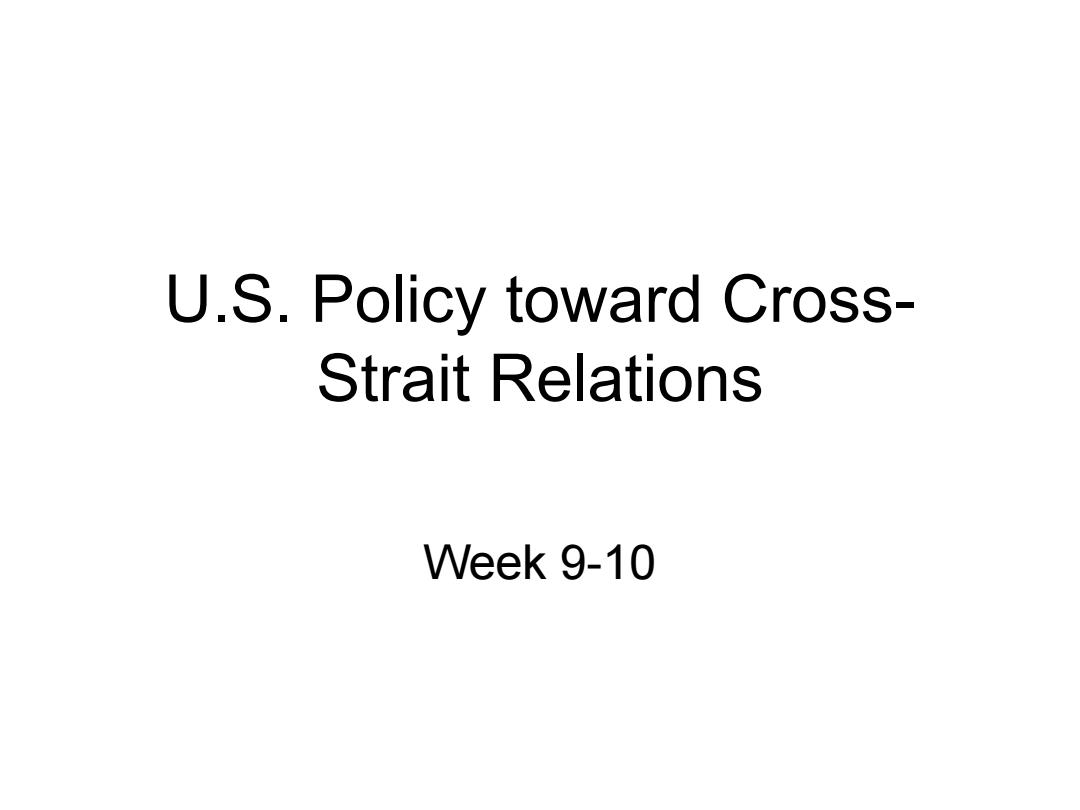
U.S.Policy toward Cross- Strait Relations Week 9-10
U.S. Policy toward Cross- Strait Relations Week 9-10
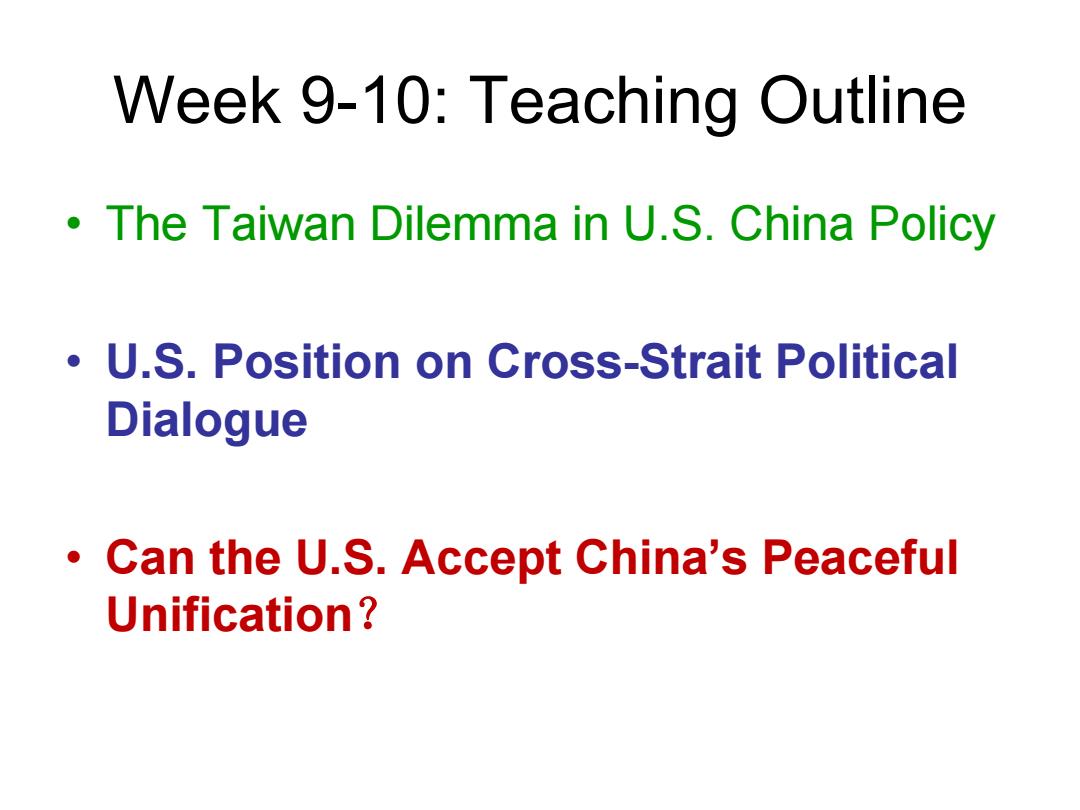
Week 9-10:Teaching Outline The Taiwan Dilemma in U.S.China Policy U.S.Position on Cross-Strait Political Dialogue Can the U.S.Accept China's Peaceful Unification?
Week 9-10: Teaching Outline • The Taiwan Dilemma in U.S. China Policy • U.S. Position on Cross-Strait Political Dialogue • Can the U.S. Accept China’s Peaceful Unification?
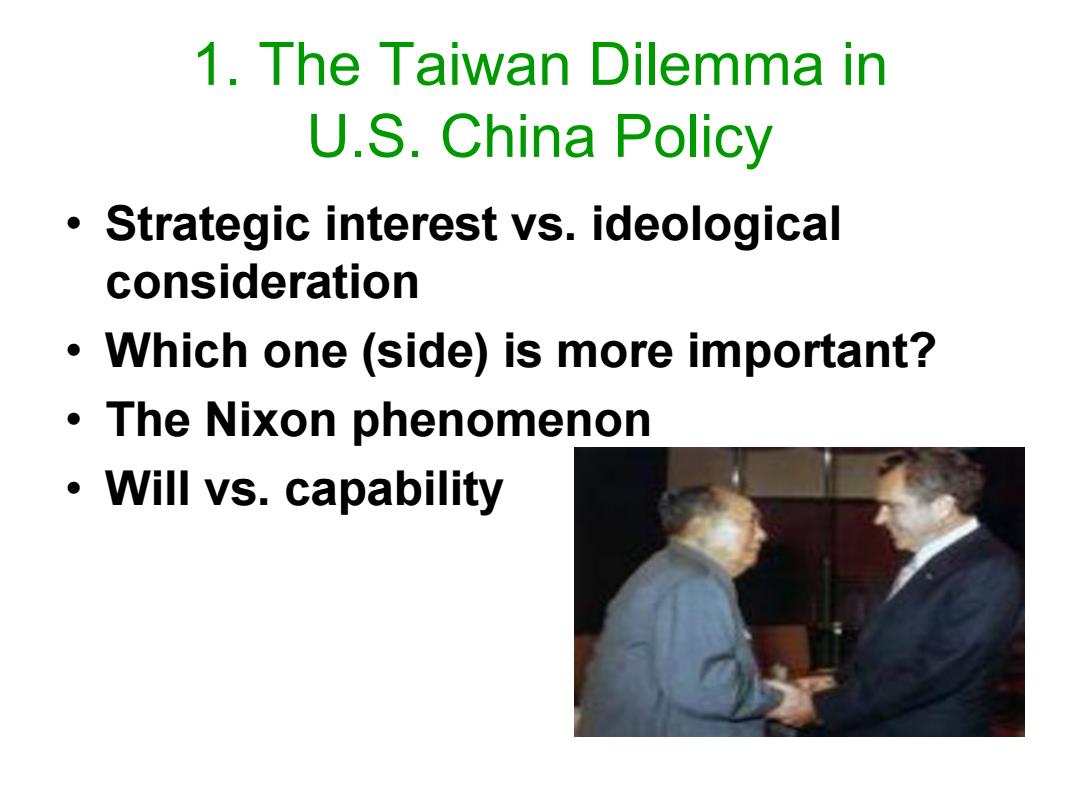
1.The Taiwan Dilemma in U.S.China Policy Strategic interest vs.ideological consideration Which one (side)is more important? ·The Nixon phenomenon ·Vill vs.capability
1. The Taiwan Dilemma in U.S. China Policy • Strategic interest vs. ideological consideration • Which one (side) is more important? • The Nixon phenomenon • Will vs. capability
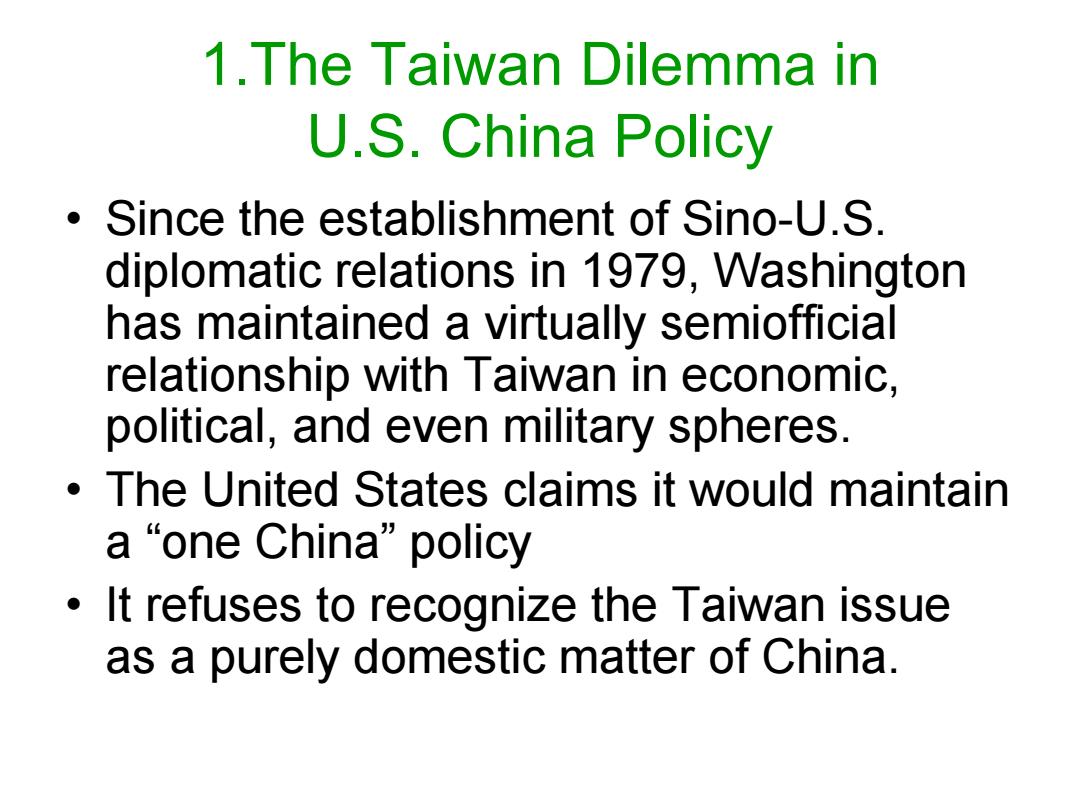
1.The Taiwan Dilemma in U.S.China Policy Since the establishment of Sino-U.S. diplomatic relations in 1979,Washington has maintained a virtually semiofficial relationship with Taiwan in economic, political,and even military spheres. The United States claims it would maintain a“one China”policy It refuses to recognize the Taiwan issue as a purely domestic matter of China
1.The Taiwan Dilemma in U.S. China Policy • Since the establishment of Sino-U.S. diplomatic relations in 1979, Washington has maintained a virtually semiofficial relationship with Taiwan in economic, political, and even military spheres. • The United States claims it would maintain a “one China” policy • It refuses to recognize the Taiwan issue as a purely domestic matter of China
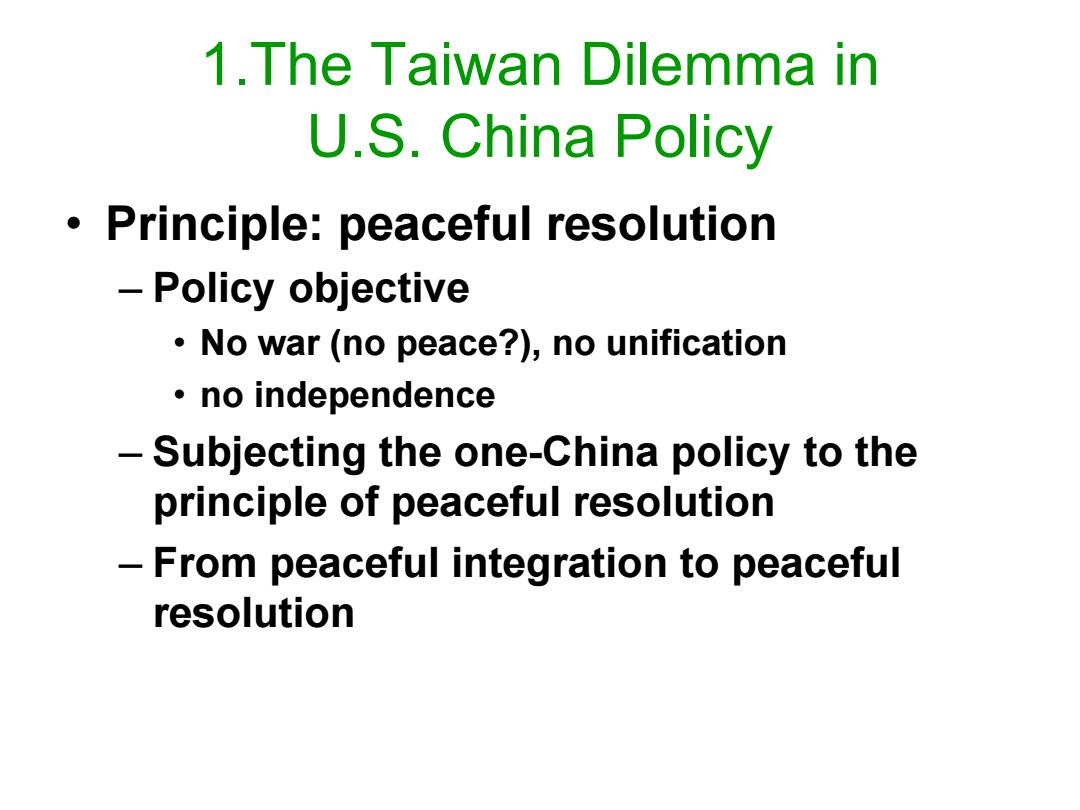
1.The Taiwan Dilemma in U.S.China Policy Principle:peaceful resolution Policy objective No war (no peace?),no unification ·no independence Subjecting the one-China policy to the principle of peaceful resolution From peaceful integration to peaceful resolution
1.The Taiwan Dilemma in U.S. China Policy • Principle: peaceful resolution – Policy objective • No war (no peace?), no unification • no independence – Subjecting the one-China policy to the principle of peaceful resolution – From peaceful integration to peaceful resolution
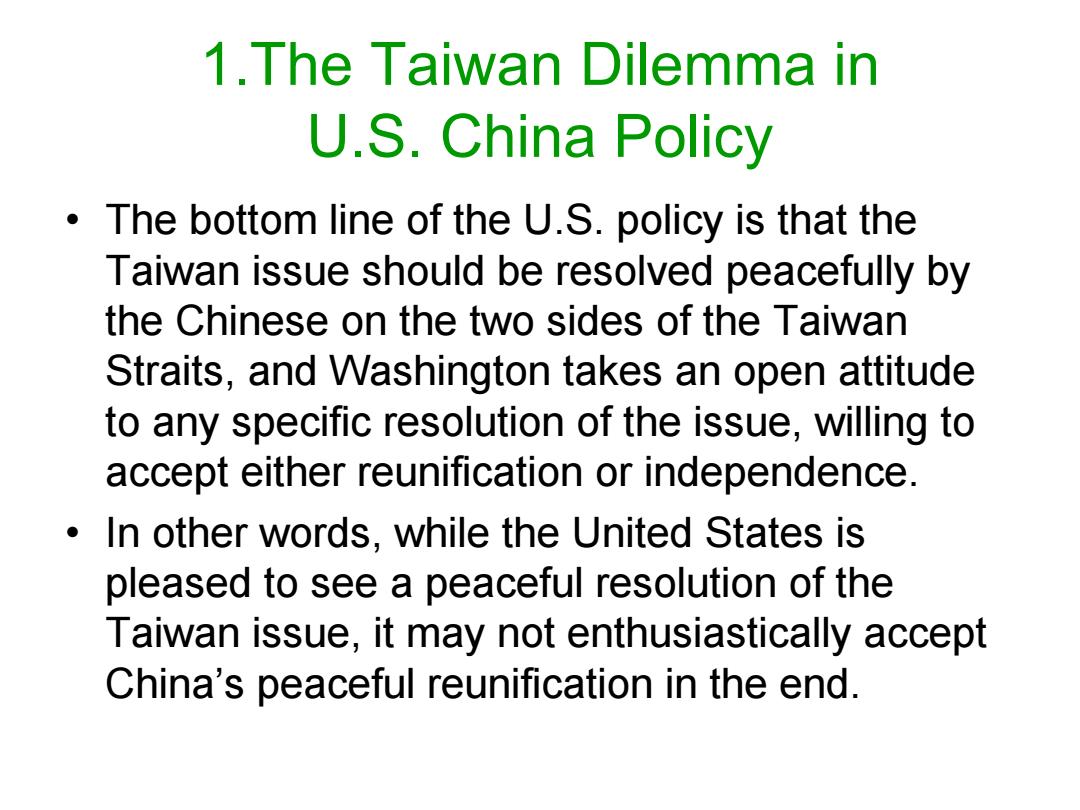
1.The Taiwan Dilemma in U.S.China Policy The bottom line of the U.S.policy is that the Taiwan issue should be resolved peacefully by the Chinese on the two sides of the Taiwan Straits,and Washington takes an open attitude to any specific resolution of the issue,willing to accept either reunification or independence. In other words,while the United States is pleased to see a peaceful resolution of the Taiwan issue,it may not enthusiastically accept China's peaceful reunification in the end
1.The Taiwan Dilemma in U.S. China Policy • The bottom line of the U.S. policy is that the Taiwan issue should be resolved peacefully by the Chinese on the two sides of the Taiwan Straits, and Washington takes an open attitude to any specific resolution of the issue, willing to accept either reunification or independence. • In other words, while the United States is pleased to see a peaceful resolution of the Taiwan issue, it may not enthusiastically accept China’s peaceful reunification in the end

1.The Taiwan Dilemma in U.S.China Policy In the late 1980s,the strategic foundation of Sino-U.S.cooperation in dealing with the Soviet Union was gradually loosening due to the detente of U.S.-Soviet relations and the normalization of Sino-Soviet relations
1.The Taiwan Dilemma in U.S. China Policy • In the late 1980s, the strategic foundation of Sino-U.S. cooperation in dealing with the Soviet Union was gradually loosening – due to the detente of U.S.-Soviet relations and the normalization of Sino-Soviet relations

1.The Taiwan Dilemma in U.S.China Policy With the dramatic changes within former Soviet Union and Eastern European countries in the early 1990s,the world entered into the post-Cold War era Consequently,there was a want of a solid foundation of Sino-U.S.strategic cooperation and a new one was yet to be found
1.The Taiwan Dilemma in U.S. China Policy • With the dramatic changes within former Soviet Union and Eastern European countries in the early 1990s, the world entered into the post-Cold War era • Consequently, there was a want of a solid foundation of Sino-U.S. strategic cooperation and a new one was yet to be found

1.The Taiwan Dilemma in U.S.China Policy In this transitional period,the United States no longer took China's core interests,including cross-strait reunification,so seriously as in the past. -U.S.officials avoided talking about peaceful reunification
1.The Taiwan Dilemma in U.S. China Policy • In this transitional period, the United States no longer took China’s core interests, including cross-strait reunification, so seriously as in the past. – U.S. officials avoided talking about peaceful reunification
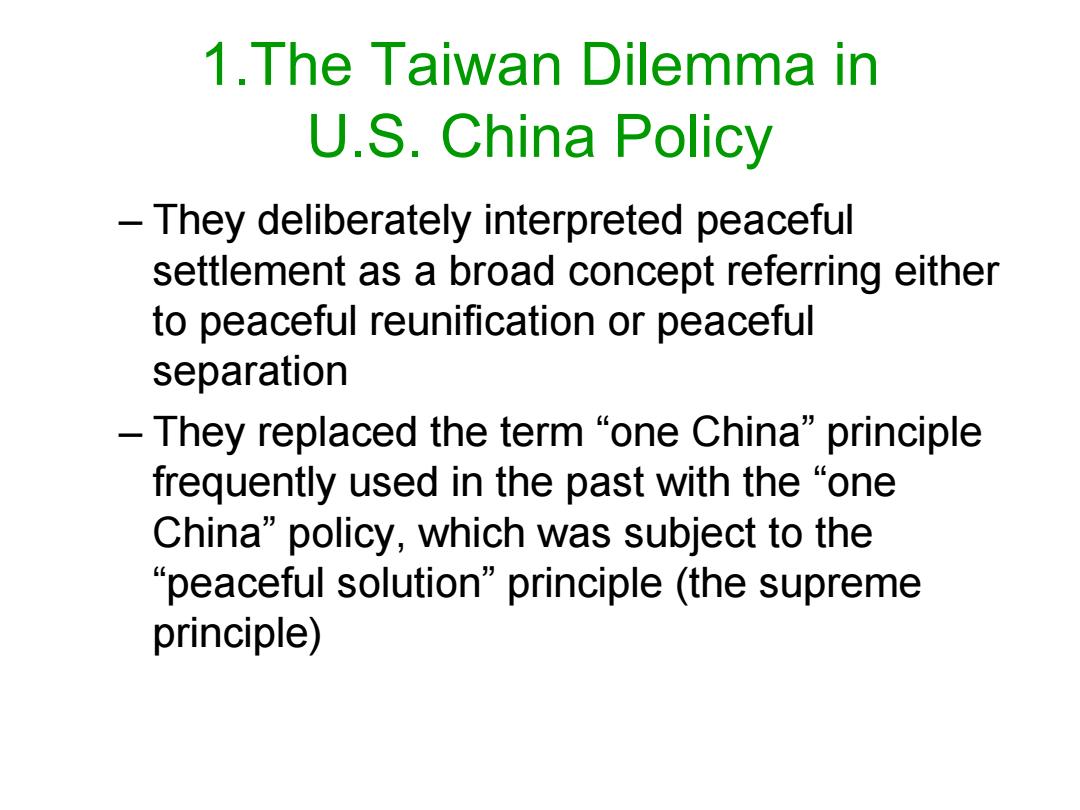
1.The Taiwan Dilemma in U.S.China Policy They deliberately interpreted peaceful settlement as a broad concept referring either to peaceful reunification or peaceful separation -They replaced the term“one China”principle frequently used in the past with the "one China"policy,which was subject to the “peaceful solution”principle(the supreme principle)
1.The Taiwan Dilemma in U.S. China Policy – They deliberately interpreted peaceful settlement as a broad concept referring either to peaceful reunification or peaceful separation – They replaced the term “one China” principle frequently used in the past with the “one China” policy, which was subject to the “peaceful solution” principle (the supreme principle)